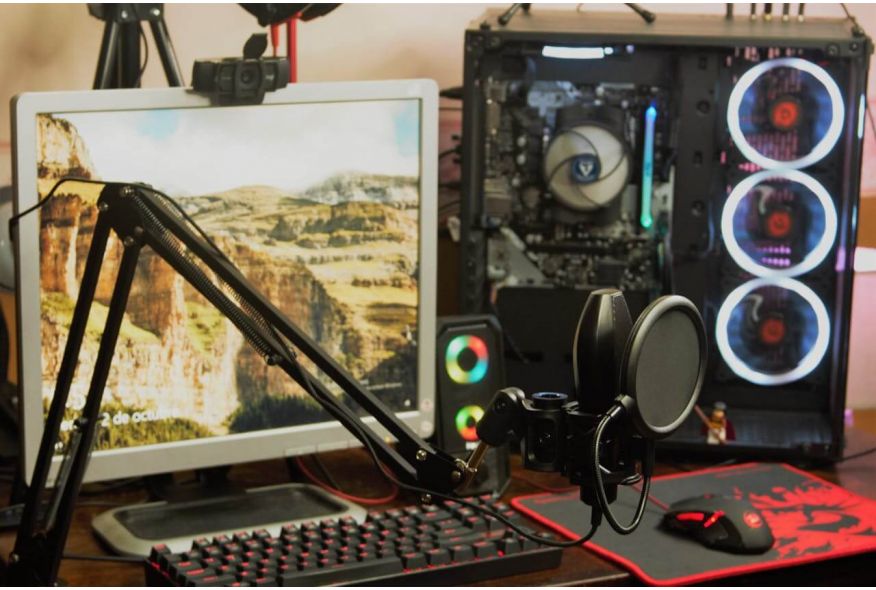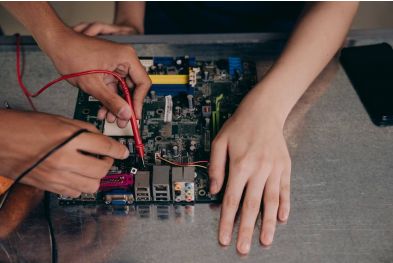How to Avoid Compatibility Issues When Building Your PC
Building a custom PC is exciting, but compatibility issues can turn your dream machine into a frustrating puzzle. Mismatched parts lead to wasted time, extra costs, or even damaged components. Whether you’re a first-time builder or a seasoned enthusiast, this guide will help you dodge common compatibility pitfalls and ensure your PC works flawlessly from the first boot.
Why Compatibility Matters
Modern PC components are designed for specific standards, but not all parts play nicely together. Common issues include:
CPU-motherboard mismatches (wrong socket type).
RAM that doesn’t fit or runs at reduced speeds.
Oversized GPUs that won’t fit in your case.
Insufficient PSU wattage for high-end hardware.
BIOS incompatibilities with newer CPUs.
Let’s break down how to avoid these headaches.
Step 1: Plan Your Build Around the CPU and Motherboard
The CPU and motherboard are the core of your system. Start here:
Match the socket type:
Intel CPUs require LGA sockets (e.g., LGA 1700 for 13th Gen).
AMD CPUs use AM4/AM5 sockets (check generation compatibility).
Check chipset support:
A B760 motherboard may not support overclocking an Intel K-series CPU.
A budget A520 AMD board might lack PCIe 4.0 for newer GPUs.
BIOS compatibility: Older motherboards may need a BIOS update to work with newer CPUs (e.g., Ryzen 5000 on a B450 board).
Pro Tip: Use PCPartPicker to auto-flag socket and chipset conflicts.
Step 2: Verify RAM Compatibility
RAM issues can cause boot failures or performance throttling:
Check motherboard QVL: The Qualified Vendor List (QVL) specifies tested RAM kits.
Match DDR generations: DDR4 ≠ DDR5. Mixing them physically won’t work.
Mind speed and capacity: A 3600MHz kit may downclock to 3200MHz on some boards.
Step 3: Ensure Your GPU Fits (Physically and Electrically)
Case clearance: Measure GPU length/width vs. case specs. Don’t forget radiator space!
PSU requirements: High-wattage GPUs (e.g., RTX 4090) need 850W+ PSUs and PCIe 5.0 cables.
PCIe slot version: A PCIe 4.0 GPU works in a PCIe 3.0 slot but may lose performance.
Step 4: Double-Check Power Supply (PSU) Compatibility
Wattage: Use a PSU calculator (see previous guide) and add a 20% buffer.
Connectors: Modern GPUs need 8-pin or 12VHPWR cables; some motherboards require dual CPU power.
Form factor: ATX vs. SFX (for small cases).
Step 5: Don’t Overlook Cooling and Storage
CPU cooler height: Check case and RAM clearance. Low-profile coolers fit small builds.
Storage slots: M.2 NVMe drives need PCIe lanes; SATA ports may be disabled if M.2 is used.
AIO radiator support: A 360mm radiator won’t fit in a case designed for 240mm.
Step 6: Update BIOS and Drivers Preemptively
Check motherboard support: Download the latest BIOS for CPU/RAM stability.
Prepare a USB drive: Some boards require BIOS updates via USB if the CPU isn’t supported out-of-the-box.
Common Mistakes to Avoid
Assuming size compatibility: "It looks small in the photo" isn’t reliable—measure twice!
Ignoring PSU efficiency: A cheap PSU can’t sustain peak loads, risking component damage.
Overlooking BIOS updates: A Ryzen 7 7800X3D won’t boot on an older AM5 BIOS.
Tools to Simplify Compatibility Checks
PCPartPicker: Flags conflicts and suggests alternatives.
Motherboard manufacturer QVL lists: Ensure RAM and storage are validated.
GPU/PSU dimension databases: Sites like TechPowerUp list exact component sizes.
🔧 Found this guide helpful? Share it with friends or fellow builders on Facebook, Twitter, or Reddit to save them from compatibility nightmares! 🔧
By methodically checking each component, you’ll avoid costly mistakes and enjoy a seamless PC-building experience. Got questions? Drop them in the comments below!
🚀 Help others build smarter! Share this article to spread hassle-free PC-building tips! 🚀







